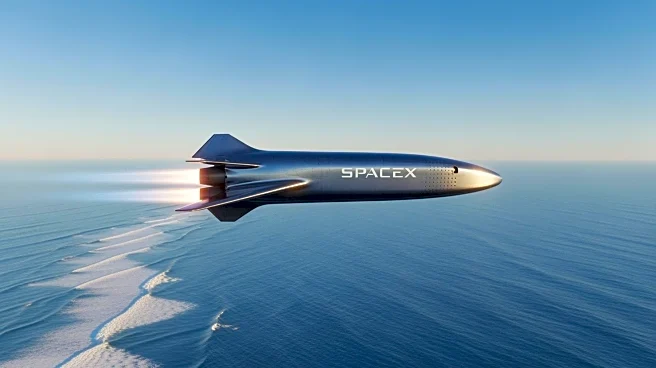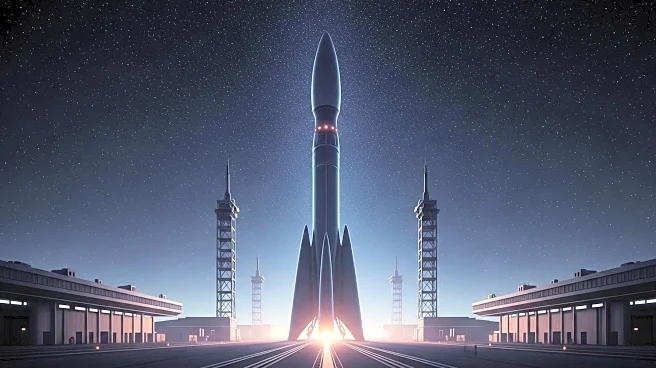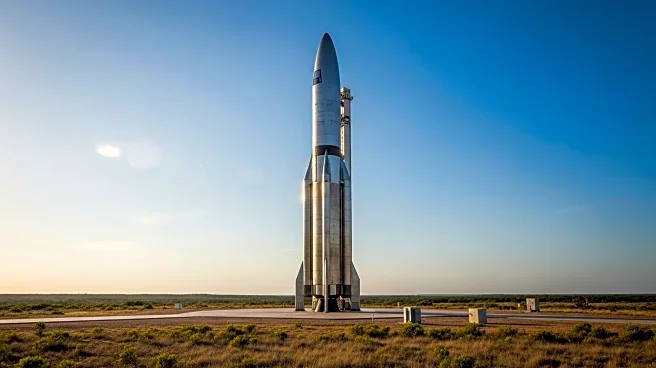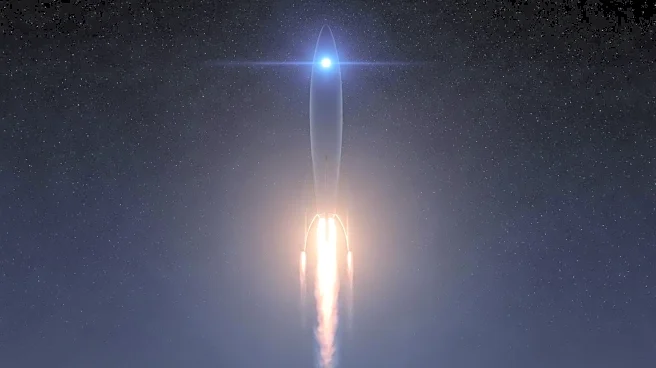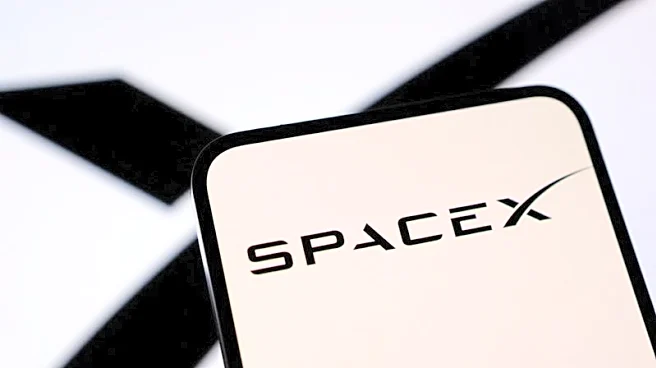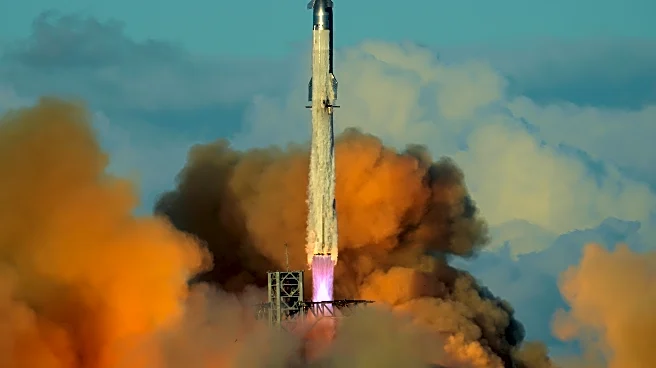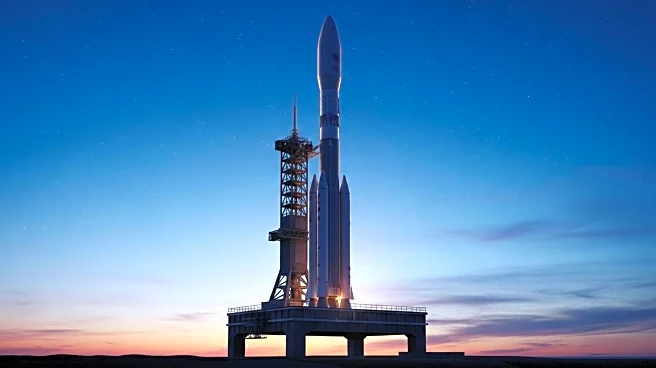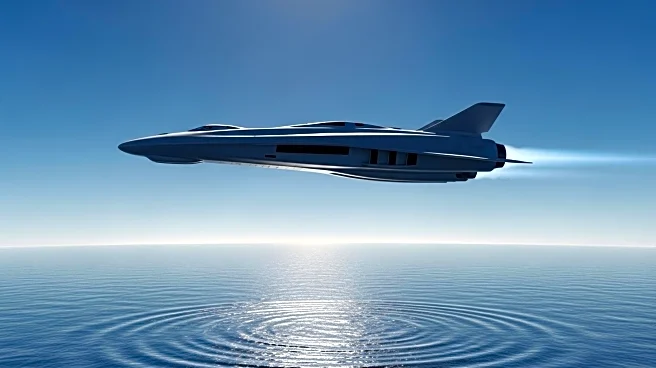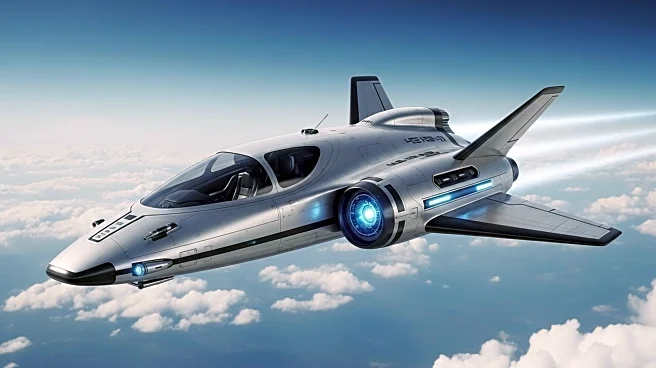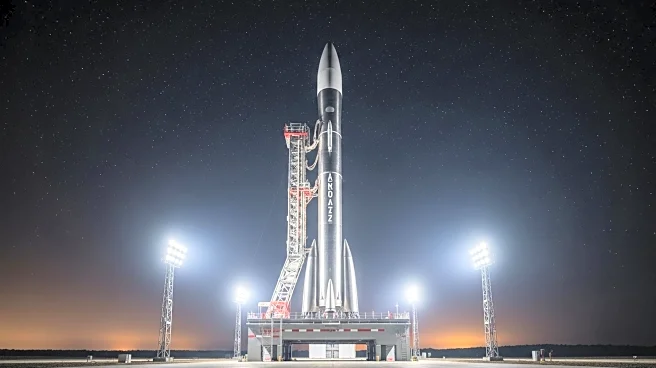What's Happening?
SpaceX's Starship successfully completed its eleventh test flight, culminating in a splashdown in the Indian Ocean. The launch took place from SpaceX's Starbase facility in South Texas, marking the final
flight of the current Super Heavy booster and Ship upper stage version. The test achieved all mission goals, including deploying simulated Starlink satellites and initiating a Raptor engine relight in space. The flight demonstrated improvements over previous tests, with less physical damage and discoloration to the spacecraft. The successful splashdown and engine burn variations prepare the rocket for its upgraded version 3.
Why It's Important?
The successful completion of SpaceX's Starship Flight Test 11 is a significant milestone in the development of the spacecraft. It demonstrates SpaceX's progress in refining the vehicle's design and capabilities, crucial for future missions, including potential crewed flights and interplanetary travel. The test's success boosts confidence in SpaceX's ability to achieve its ambitious goals, impacting the aerospace industry and space exploration efforts. The advancements in engine technology and landing techniques are vital for the spacecraft's operational readiness, influencing future commercial and scientific missions.
What's Next?
SpaceX plans to debut a taller variant of the Super Heavy booster and Ship upper stage in the upcoming Flight Test 12. The company will continue refining the Starship's design and capabilities, focusing on achieving a return to its launch site for midair capture by the launch tower. These developments are crucial for SpaceX's long-term goals, including Mars colonization and expanding commercial space travel. The aerospace community will closely monitor these tests, as they hold implications for the future of space exploration and the viability of reusable spacecraft.
Beyond the Headlines
The successful test flight highlights the growing importance of reusable spacecraft in reducing costs and increasing the frequency of space missions. SpaceX's advancements in landing technology and engine performance contribute to the broader trend of innovation in the aerospace industry. As reusable spacecraft become more reliable, they may lead to increased opportunities for scientific research and commercial ventures in space. The test also underscores the role of private companies in advancing space exploration, potentially influencing public policy and international collaboration in the sector.
